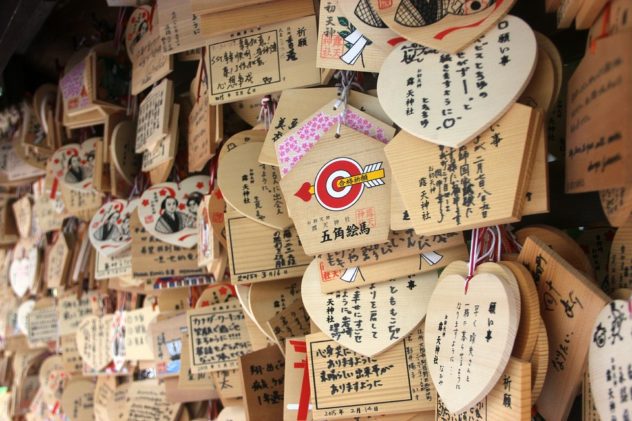Pre-Reading Questions:
- Do you usually depend on luck? Why or why not?
- What are your goals this year?
Vocabulary:
- take (one’s) pick /teyk (whuns) pik/
- engrave /en-GREYV/
- memento /muh-MEN-toh/
- disaster /dih-ZAS-ter/
- ideal /ahy-DEE-uhl/
[phrase] if you are told to take your pick, you can choose any one that you like from a group of things
The shirt is available in all colors. Just take your pick on which you want to buy.
[verb] to cut a picture or design, or letters into the surface of a hard substance such as metal, wood, or stone
Mysterious patterns are engraved on the 2000-year-old stone that was recently discovered in China.
[noun] an object that you keep to remember a person, place, or event
She kept the rare rainbow seashell she found in Hawaii as a memento of the place.
[noun] an event causing great harm, damage, or suffering
One way to keep yourself safe from natural disasters is to evacuate from the affected areas.
[adjective] perfect, or the best possible
Mana is considered the ideal employee in the company.
Omamori consists of messages engraved on either wood or paper that are believed to provide good fortune and safety to the owner. These lucky charms are also considered perfect mementos to bring back home, tourist or not. Let’s have a look at some types of omamori that are bought in temples and shrines:
Most common examples of omamori:
Katsumori – for general success or to achieve something you wished for
Yakuyoke – for keeping bad luck and disasters away from the owner
Kenko – for health protection
More specific types of omamori:
Kanai-anzen – for the wellbeing of one’s family
Shobai-hanjo – for business and financial growth
Byoki-heyu – a “get well soon” charm for one who’s sick
There is no definite way to tell what omamori is ideal. According to a Shinto priest, the omamori itself will reach out to call you. That being said, which omamori do you need this year?
Comprehension Questions:
- Where can omamori be bought?
- What type of omamori grants protection to the owner’s health?
- Based on the article, what are omamori considered as?
- What Japanese lucky charm represents a “get well soon” message?
- What does omamori consist of according to the article?
Discussion Questions:
- If you were to choose, what omamori from the list in the article do you wish to have? Why?
- Do you agree that there is no clear way to know if an omamori is ideal or not? Why or why not?
- What lucky charm is the most popular in Japan? Please give more details.
- What type of omamori do you think is popular among locals? Kindly elaborate.
- In your opinion, why do you think engimono (Japanese lucky charms) are famous among tourists?
